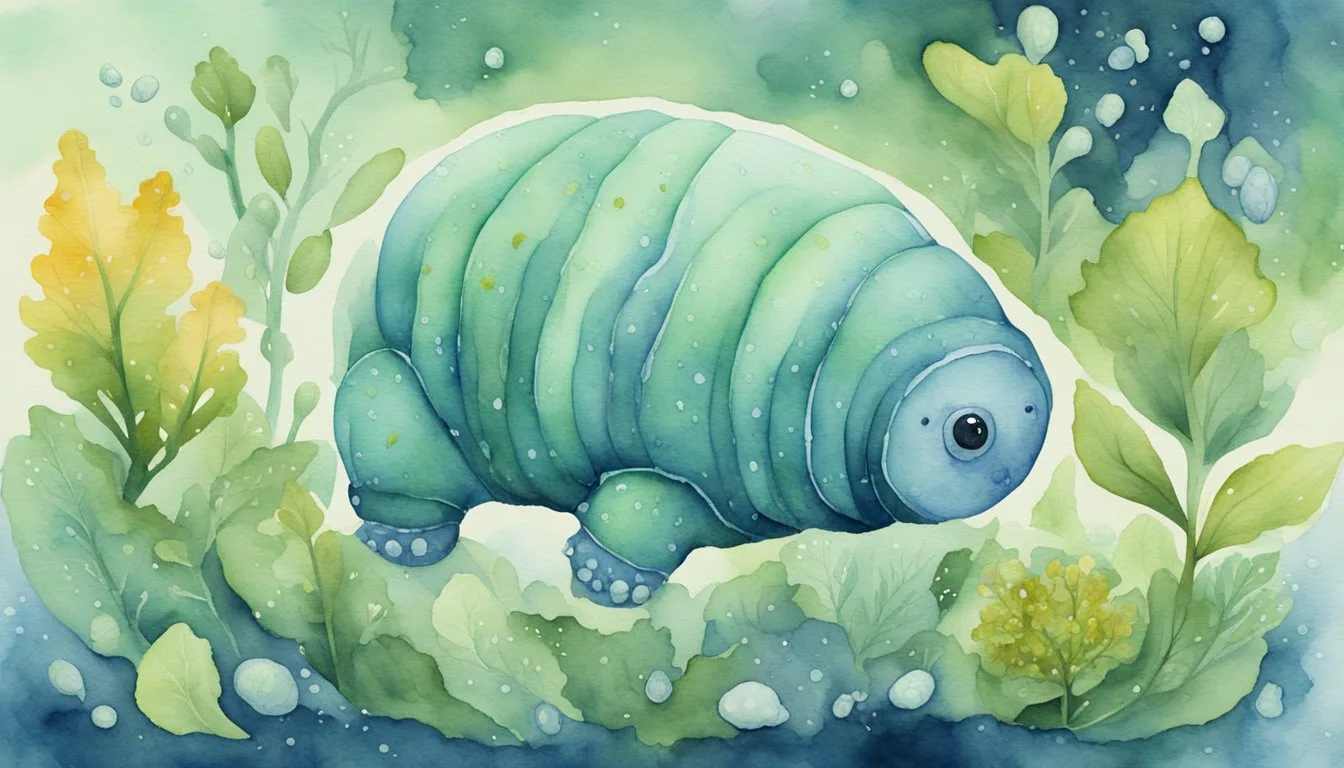Understanding Tardigrades
Tardigrades, often known as water bears or moss piglets, are remarkable for their resilience and have intrigued scientists since their discovery. They possess unique abilities to survive in extreme conditions that would be lethal to most life forms.
Scientific Classification and History
Tardigrades belong to the phylum Tardigrada, established in the late 18th century by scientists Johann August Ephraim Goeze and Lazzaro Spallanzani. These tiny creatures are part of the superphylum Ecdysozoa, which also includes arthropods and nematodes. This categorizes them among animals that molt their exterior covering.
Physical Characteristics
Microscopic in size, tardigrades possess a distinct anatomy with eight legs and claw-like appendages. Their mouthparts contain stylets, which they use to pierce plant cells, moss, or lichen. They have a simple digestive system, known as an alimentary canal, that runs through their body.
Habitats and Distribution
Tardigrades are found in a variety of environments ranging from the deep sea to moss and lichen in terrestrial habitats. They inhabit aquatic as well as semi-aquatic ecosystems, which can be as diverse as sand and soil. Their exceptional adaptability allows them to thrive in many ecosystems.
Reproduction and Life Cycle
These creatures can reproduce both sexually, with fertilization of a female’s eggs by a male, and asexually, through a process known as parthenogenesis. After molting, a female tardigrade can lay her fertilized eggs or unfertilized if reproducing asexually.
Cryptobiosis and Survival Mechanisms
Tardigrades are best-known for their ability to enter a state called cryptobiosis. In this tun state, their metabolism drops to as low as 0.01 percent of normal and they can withstand dehydration and other forms of environmental stress. In this desiccated state, they produce the sugar trehalose, which helps protect their cells from damage.
Discover more about their intriguing cryptobiosis mechanisms and their ability to survive extreme conditions. For a deeper look into their fascinating lives and diverse habitats, refer to this comprehensive guide on tardigrades. To explore their unique place in the animal kingdom and survival in space, visit National Geographic’s tardigrade profile. For a historical perspective on these resilient creatures, the tardigrade overview on Wikipedia provides a wealth of information.
What Can Tardigrades Teach Us About Survival Compared to Camels?
Tardigrades, known for their resilience in extreme conditions, offer intriguing insights about camel survival. Both species adapt remarkably to harsh environments, yet tardigrades survive desiccation and radiation while camels excel in arid deserts through water conservation and fat storage. Examining these strategies reveals nature’s diverse survival tactics.
Tardigrades in Research and Culture

Tardigrades, often referred to as water bears or moss piglets, are microscopic animals that have captured the attention of researchers and the public alike due to their remarkable durability under extreme conditions. Across various studies and popular media, these tiny creatures continue to fascinate and inspire.
Scientific Studies and Discoveries
Scientists have been investigating tardigrades for up to 30 years, making groundbreaking discoveries about their resiliency. For instance, a protein known as dsup (damage suppressor) helps protect their DNA from radiation damage. Researchers from the University of North Carolina at Chapel Hill and New Jersey Institute of Technology discovered that dsup binds to tardigrade DNA and shields it from harm caused by free radicals. Studies published in journals like PLOS One have further unraveled the complexities of tardigrade genomes, revealing how these animals survive in extreme conditions.
Tardigrades in Extreme Environments
As extremophiles, tardigrades can endure environments that would be fatal to most forms of life. They are capable of surviving the vacuum of space and withstand temperatures close to absolute zero as well as above boiling. Tardigrades resist immense pressures and high levels of ionizing radiation, which has been demonstrated in studies conducted in outer space. Scientists, including biologists from places like Harvard, study various species such as Ramazzottius varieornatus, Milnesium swolenskyi, and Hypsibius exemplaris to understand how their proteins and genome structure contribute to their resilience.
Cultural Impact and Media Attention
The peculiar charm of tardigrades means they often feature in media and popular culture. These resilient creatures have leaped from scientific journals into the spotlight with features in television, literature, and art. Known for their durability and unique physiology, tardigrades or “moss piglets” have become a symbol of endurance in the face of adversity, drawing attention from audiences outside the scientific community. The extreme survival abilities of tardigrades have generated significant media attention and have been highlighted in works ranging from documentaries to science fiction, underscoring the widespread fascination with these tiny yet mighty animals.

